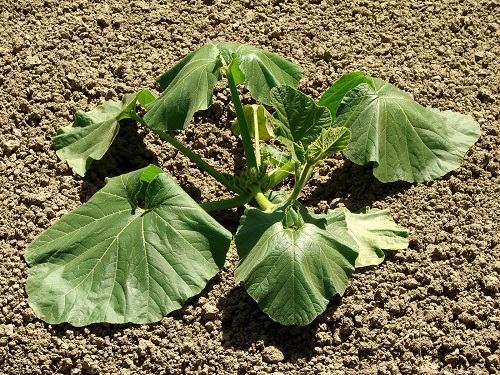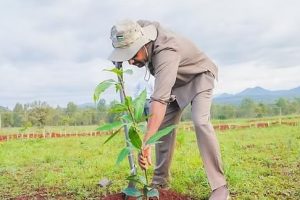
BY EPHREM ANDARGACHEW
The natural capital of the country accounts for about 40 percent of Ethiopia’s total wealth, with cropland and pastureland comprising over two-thirds of this wealth. Thus, a better understanding of the state of natural capital and of the flows of benefits it provides is vital to ensure sustainable development and equitable growth.
Cognizant of this Ethiopia set goals to build a green economy and to follow a climate resilient green growth path that fosters sustainable development. The government has also launched Green Legacy Initiative in 2018. The Initiative, apart from various environmental protection and conservation, aimed to see 20 billion trees planted across the nation by 2022.
Hence, during the 2019 plantation campaign, under the leadership of Prime Minister Abiy Ahmed, over 23 million people and during the 2020 plantation period over 27 million Ethiopians have participated in the plantation. Even in 2021, Ethiopia has planted about 6 billion tree seedlings. Although the initiative set 20 billion targets in four years, within 3 years, more than 18 billion seedlings have been planted across the nation.
The initiative is not limited only nationwide it also includes ambassadors and diplomatic communities residing in the country. Besides, the initiative has an intention to include neighbouring countries. Prime Minister Abiy Ahmed (PhD) said the green legacy initiative is critical to Ethiopia’s aspirations to build a green and climate-resilient economy.
“Our natural environment is our important determinant of human health. And a healthy ecosystem that supports biodiversity is critical. Like other parts of the world, Ethiopia has also been confronted with climate change and environmental degradation” the premier noted.
PM Abiy stressed that climate change effects have contributed to flooding, soil erosion, deforestation, and biodiversity loss adding countering climate change and paving way for green growth has been one of Ethiopia’s key development objectives.
Based on the efforts of the Ethiopian people and government, the country has registered remarkable afforestation results. Hence, the country’s forest cover has grown by 17.2 per cent, especially in the last three years, with environmental and multi-million green markings.
Abebe Kebede in (2021) academic work entitled “The Legal Protection of Forests: Ethiopian Green Legacy vs. International Environmental Regimes” stated that the forest ecosystem gives many services to humans and nature, including but not limited to fuel, non-wood forest products, soil and water protection, protection of fragile ecosystems (mountains,
drylands, and small islands), biodiversity conservation, climate change mitigation/carbon sequestration, other economic and socio-cultural values and services.
It also protects the environment by regulating climate processes and climate change. Forests maintain the quantity, quality, and regular water flow; store carbon in their organs and soils, including absorbing atmospheric carbon dioxide to keep climatic balances and prevent atmospheric disruption. As they usually grow on mountains and elevated areas, forests also prevent soil erosion.
Economic-wise, a forest accelerates the economic development of a state in general and hosts wildlife in particular. Forests are sources of medicine, food, a dwelling place for humans, and wildlife for a long. Mainly, indigenous people and other rural communities’ livelihood, social-cultural, and spiritual manifestations are based on forest products. Economists estimate that more than one-fourth of the income in rural communities comes from natural forests, he noted.
Taking the efforts of the government, the rainfall shortages, and the current instability into consideration, it is important to give due attention to those seedlings which were planted the past three years.
Ethiopian Environment and Forest Research Institute Plantation and Agroforestry Director and Senior Expert Dr. Abayneh Derero told The Ethiopian Herald that the people and government of Ethiopia have exerted maximum efforts to tackle climate change through various mechanisms.
Planting tree seedlings during the Ethiopian winter period is one of the mechanisms that has been implemented for the past three years. Although much has been achieved, still there are some drawbacks in treating and protecting the planted tree seedlings, he said.
Among the problems, the tree seedlings are exposed to livestock or grazing since the planted trees are not far away from the framer’s home. Besides, lack of modern grazing management especially, in arid and semi-arid areas of the country is also another problem that is observed in protecting and conserving the planted tree seedlings.
Grazing or overgrazing damages habitats, destroy indigenous plants and cause soil erosion. When livestock feeds themselves native plants or planted tree seedlings, it affects not only the people who reside there but also the nation as a whole. Because it reduces food supply in ecosystems since the animals start competing for non-invasive plants for food.
Ethiopian Biodiversity Institute Research, Dissemination and Project Implementation Director and Botanist Tesfaye Awas (PhD) told The Ethiopian Herald that the tasks of the green legacy initiative are very important to curb desertification. But much has been remaining to strengthen the initiative. Hence, the government, the people, the farmers, and concerned bodies should work together to protect and treat planted tree seedlings. Because the seedlings shouldn’t be eaten by animals. They should be productive and have to be planted in their natural places.
According to Dr. Abayneh, to make the planted tree seedlings fruitful, it is important to improve the grazing management system of the country. Besides, Ethiopia should plant climate change-resistant seedlings, the planted seedlings should be also adapted to the local climate, and economically viable.
Moreover, the government, in addition to winter seasons planting tree seedlings campaign and irrigation particularly summer wheat production, should prepare summer seedlings to be planted according to local climate conditions, he added.
Additionally, by strengthening the water retention capacity during the winter months, the farmer should use it for the summer seasons. It is, unlike winter seasons, also advisable to follow a different procedure when preparing the seedlings for dry areas. Moreover, it is a good idea to make sure that the seedlings are planted at the same time as the seedlings. This avoids late planting tree seedlings, he explained.
Although treating seedlings during summertime is difficult, needs abundant water, and extraordinary efforts, it is important to treat tree seedlings during summertime. It is also necessary to study seedling management techniques that can improve the seedling quality of the nation. Because planted tree seedlings should be strong and give better natural, ecstatic, medication, economic and so on benefits. Hence, it is essential to do much watering and treatment works, along with summer wheat development, during the Ethiopian summer season.
The Ethiopian Herald January 2/2022





